If you’ve ever wondered which yarn to use for your tufting projects, you’re in the right place. In this updated guide you’ll find: differences between natural and synthetic fibers, ideal thicknesses, and our tips on when to use New Zealand wool, acrylic, or premium yarns such as Tufting Supreme Acrylic Kreoho®.
Updated on 01/10/2025
Table of Contents
- 1) Fibers: wool vs acrylic
- 2) Yarn thickness: what really matters
- 3) Kreoho® Acrylic Yarns: versatility and color
- 4) Tufting Supreme Acrylic: the top yarn
- 5) Tufting Pure Wool: the natural choice
- 6) Origin New Zealand Wool 100g: small format, big ideas
- 7) Technical tips for use
- 8) Must-have accessories: threader and winder
- 9) Inspiration and tutorials
1) Fibers: wool vs acrylic
The most commonly used yarns in tufting fall into two major families:
- 100% Wool: warm, durable, elastic, and naturally moth-resistant. Ideal for rugs that will be walked on.
- Acrylic: more affordable, washable, available in many colors; perfect for wall decorations or cushions.
For example, Tufting Pure Wool Kreoho® is made from high-quality New Zealand wool, with a matte effect, durability, and moth-proof treatment. “Supreme” acrylic (explained further below) instead offers a vegan wool-like effect, great for projects with less daily wear.
2) Yarn thickness: what really matters
In tufting, thickness is not so much a matter of numbers, but of compatibility with the machine’s needle and the density of the design. The key is that the yarn flows easily through the needle without friction. You can also use 2–4 threads together to increase volume or texture, without changing tools.
For refined and full results, DK weight – 7 ply is an optimal choice. Yarns that are too thin (for fine knitting) remain sparse; yarns that are too thick (like chunky) could block the mechanism.
3) Kreoho® Acrylic Yarns: versatility and color
Besides natural fibers, Kreoho® classic acrylic yarns are a great choice for those seeking excellent value for money without compromising aesthetics. Classic acrylic is easy to work with, flows smoothly through the needle, and guarantees a wide range of bright colors. It’s perfect for decorative rugs, cushions, wall hangings, and artistic works where design and color variety take priority over resistance to heavy foot traffic.
Thanks to its lightness and simple care, this type of yarn also suits beginners who want to experiment with complex patterns without worrying too much about thread tension. In fact, classic acrylic threads easily and rarely tangles, making the tufting experience smoother and more fun.
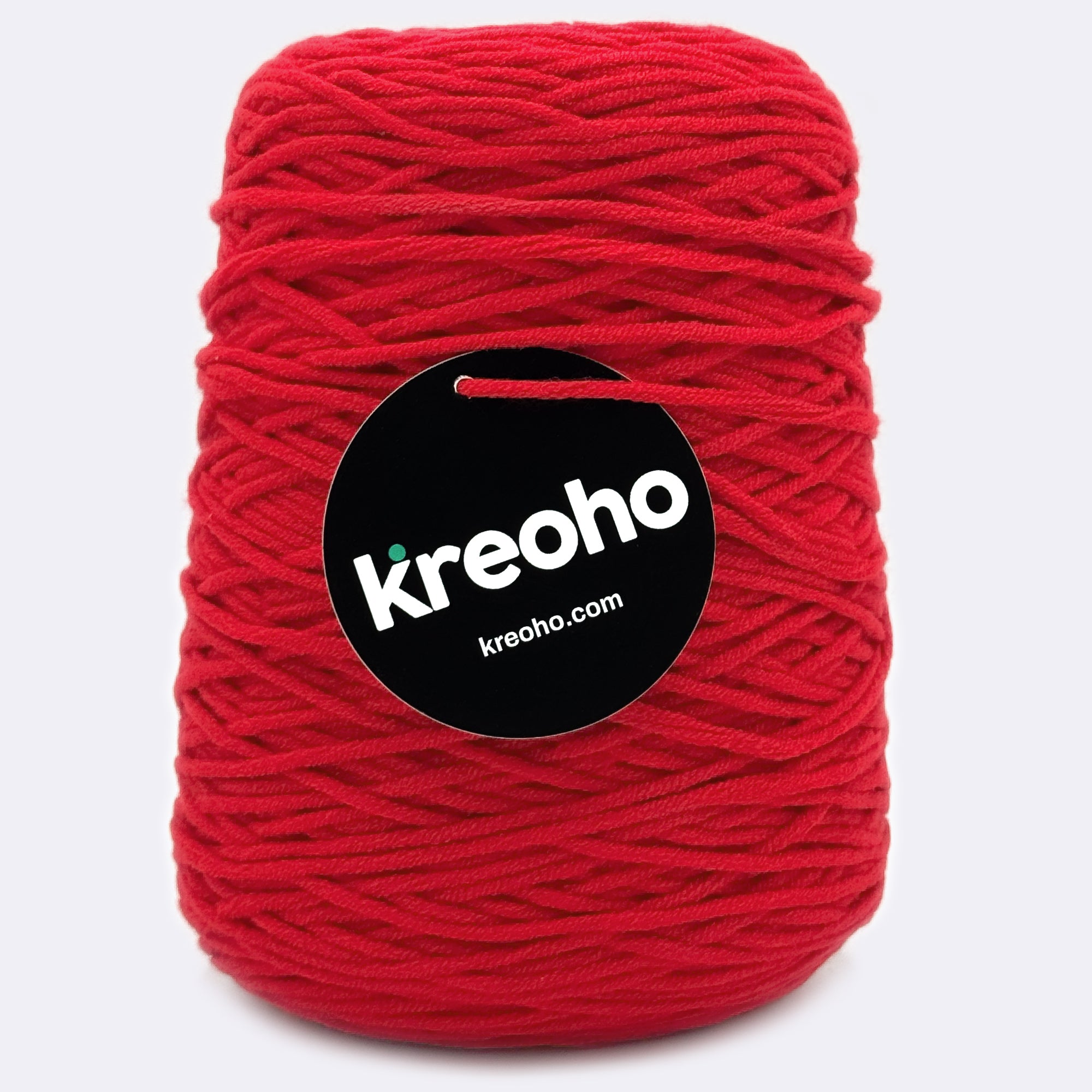
Discover Classic Acrylic Yarns
4) Tufting Supreme Acrylic: the top yarn
If you want the best in terms of performance, usability, and look, Tufting Supreme Acrylic Kreoho® is our best seller. Made with high-quality acrylic (Dralon®, Leacril®), it offers:
- Matte wool-like finish
- 250 grams per cone (about 505 meters): excellent yield; in tufting one single thread is enough
- Durability, easy washing, modern and vibrant color range
- Less waste: higher yield compared to many standard yarns
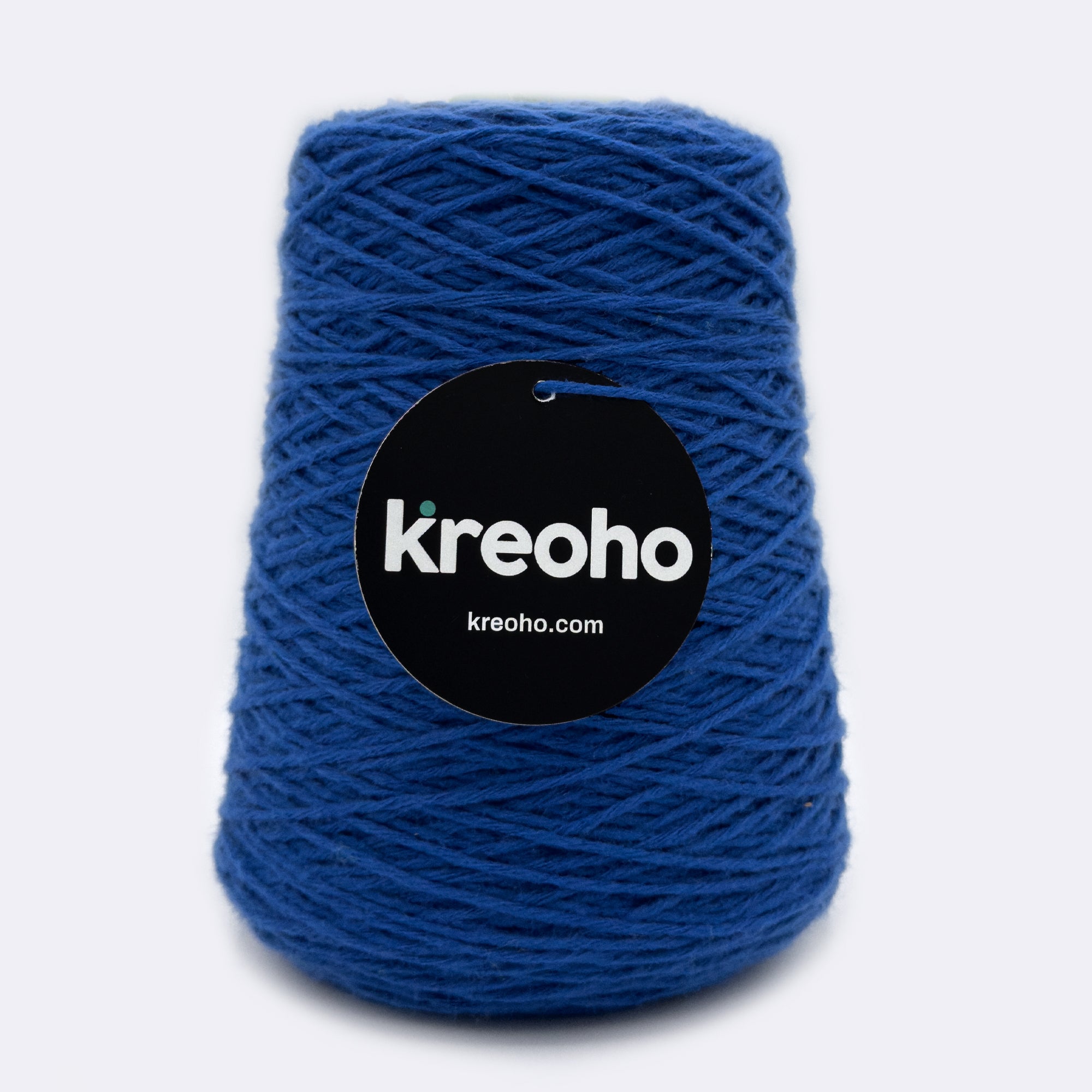
Discover Tufting Supreme Acrylic
5) Tufting Pure Wool: the natural choice
For those who love natural materials, Tufting Pure Wool is an excellent option:
- 100% New Zealand wool
- 500 g per cone ~500 m
- Moth-resistant treatment
- Soft, matte texture
- Elegant coverage for floor rugs and high-end projects
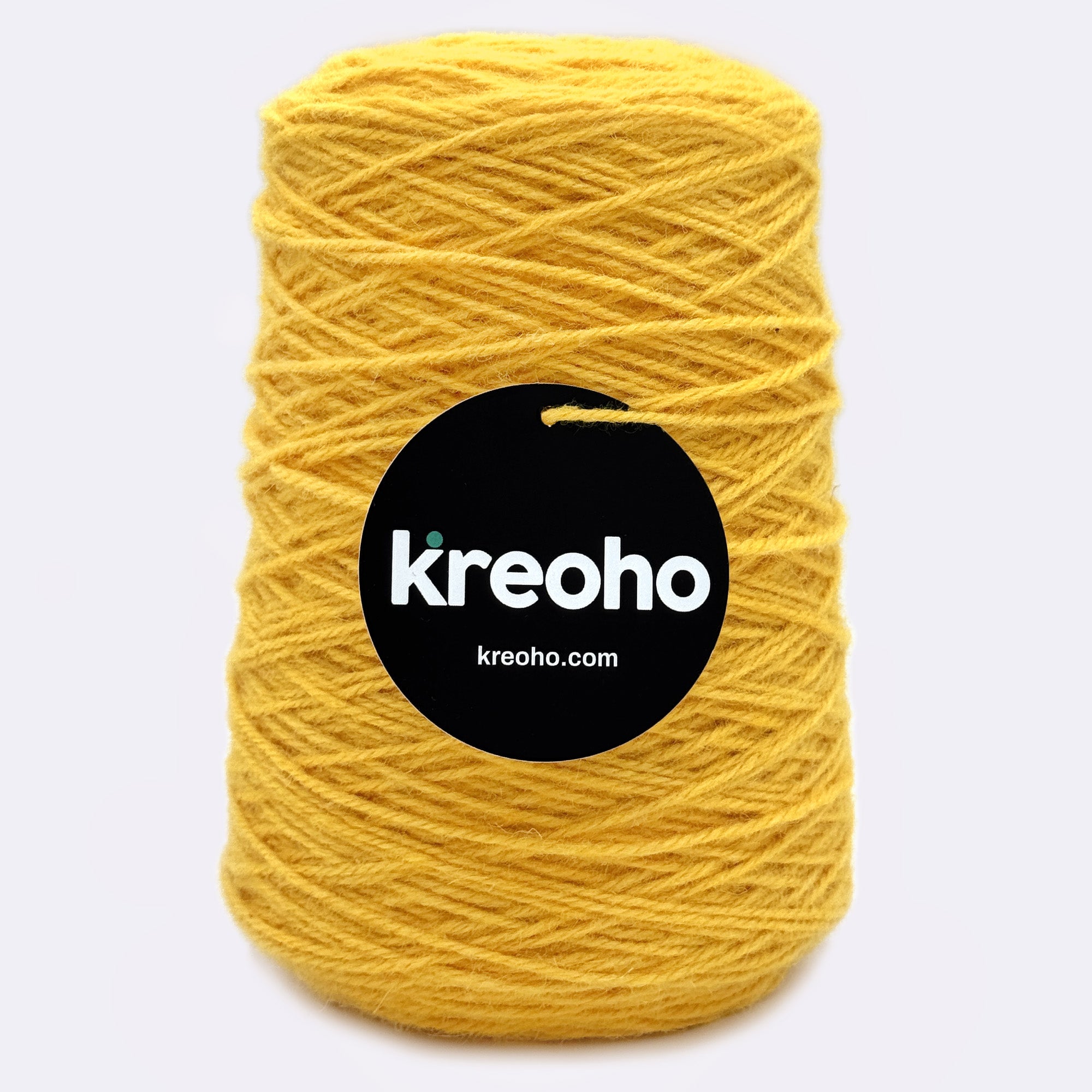
6) Origin New Zealand Wool 100g: small format, big ideas
New in our catalog: Origin New Zealand Wool Kreoho® 100g. It’s the same high-quality New Zealand wool, but in 100 g skeins (~100 m), perfect for color swatches, small projects, or combining multiple shades without waste. Ideal if you want to test new palettes, add tapestry details, or create colorful inserts on cushions and wall hangings without having to buy a full cone.
The thickness remains ARAN – 3 PLY, it flows smoothly through the needle and, thanks to its moth-resistant treatment, it retains color and structure over time. For wall art, the smaller format allows you to have more colors on a budget; for rugs, you can use several skeins of the same shade to cover larger areas.
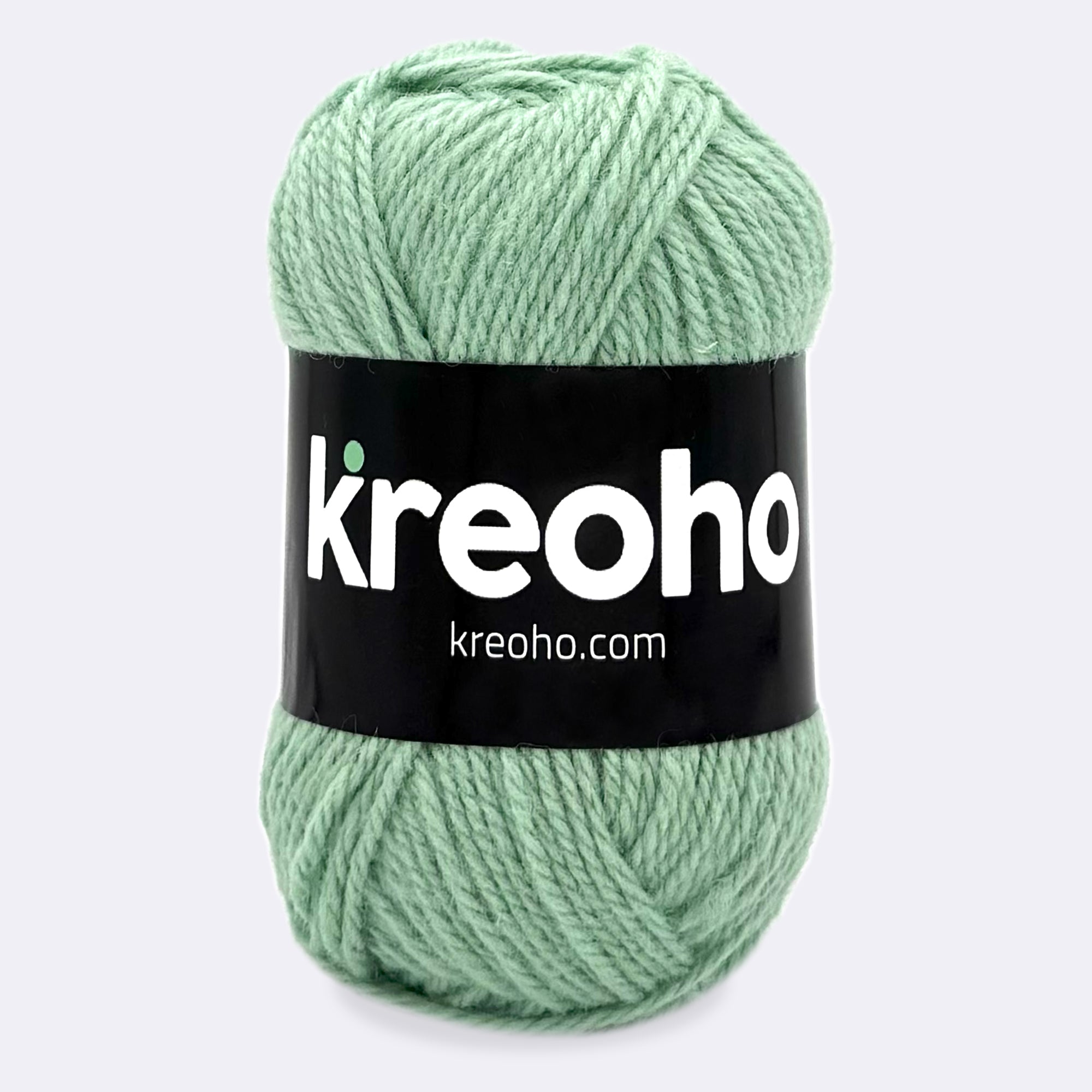
Discover Origin New Zealand Wool 100g
7) Technical tips for use
No matter which yarn you choose, here are some useful tips:
- Test on a 10 × 10 cm canvas sample (~10–15 g of yarn) to check flow and density.
- Keep thread tension constant with supports or yarn guides.
- Washing: wool dry clean or delicate cycle; acrylic machine washable (delicate cycle).
- Storage: avoid direct sunlight; natural fibers should be protected from moths.
8) Must-have accessories: threader and winder
Two small accessories that make a big difference:
- Threader: helps keep the yarn in place and reduces the risk of it slipping out of the needle.
- Winder (manual or electric): prepares yarn neatly, reducing tangles and breaks.
9) Inspiration and tutorials
For inspiration and to learn new techniques, read these articles:
- What Creative Tufting Ideas to Make?
- How to Make Long Pile Tufted Rugs?
- Tufting Machine Loop Pile Micro 3 mm
- Cleaning and Lubricating the Tufting Machine
- How to Replace the Needle of the Tufting Machine?
- What Is the Needle Hole Regulator of the Tufting Machine?
Conclusion
Now you have all the information to choose the perfect yarn based on the style and functionality of your project. The only thing left is to get it!

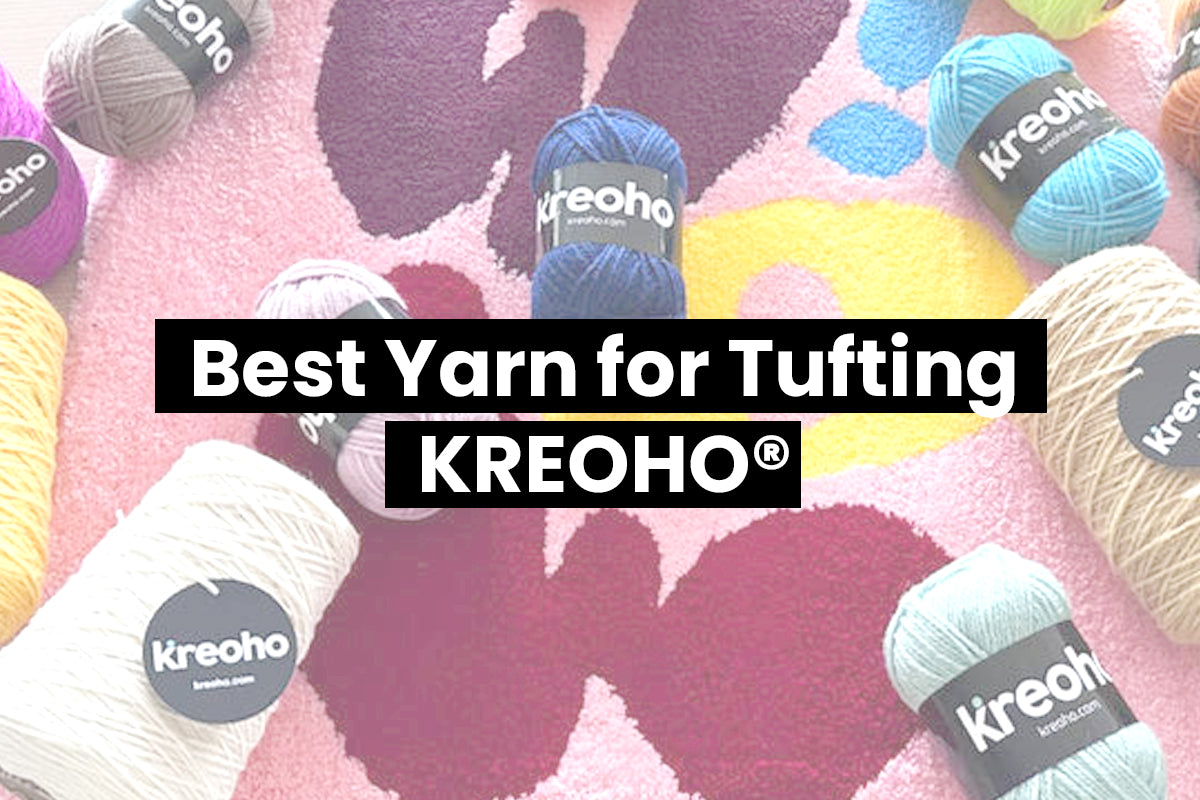

3 comments
Wat is een draaddoorvoerder?
Hi Kevin, thanks for your question! 🙌
We usually recommend using just one strand to save yarn and instead adjusting the needle hole of the tufting machine to ensure smooth flow (here’s a blog post that explains how: What is Needle Hole Regulator in Tufting
). If your goal is to achieve a much denser and more compact texture, you can also use two strands, but it’s still best to adjust the needle hole so the yarn doesn’t get stuck or jammed.
Hope this helps you plan your next project!
Hi, I wanted to know how many threads are you recommending for each type of wool you are selling so I can know how many I should buy?